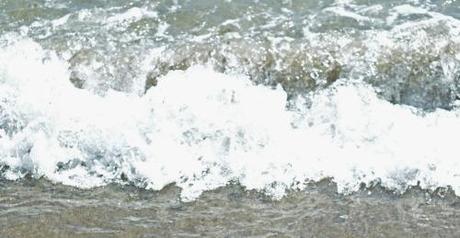
The ocean is mysterious. Poets and writers have been inspired, baffled and entranced by it, from Masefield’s following the ‘call of the running tide’ to Longfellow’s own yearning for the ‘secret of the sea’ to Arnold’s reflections on the slow cadences of ‘the grating roar of pebbles’ at Dover Beach. Cornwall itself has a maritime culture, with its long coastline, ocean-influenced climate and fishing history, and the myths and legends of the sea that fill its folklore and storytelling.
It is hard not to romanticise the oceans. Whether looking out from land to the horizon enthralled by its ebb and flow and constancy, or diving through its surface as a guest in another world, the oceans are a separate place. This apparent ‘otherness’ can make the country beneath the waves appear untouched and unsullied.
Sadly, as most will be aware, this is far, too far, from the truth. Anthropogenic impacts are hitting the seas as much as they are the continents. A walk along the high tide mark on many beaches here in Cornwall reveals the grimy washed-up debris of non-degradeable plastic rubbish; globally, oil spills and pollution have far-reaching impacts; climate change is affecting the chemistry of seawater; over-fishing is depleting fish stocks unsustainably; shipping noise is interfering with cetacean communications; and dredging and anchorages, if not managed sensitively, can destroy the habitats essential to sea creatures and sea plants.
Conservation management of the oceans around the shores of the Cornwall (and elsewhere) is therefore important and urgent. Read my summary of the impact of the Government’s consultation on marine conservation zones in Cornwall here. Nature bodies such as the Cornwall Wildlife Trust are working hard to improve things. Just like terrestrial conservation, there has to be a balance achieved between preserving ecosystems and nature, and ensuring that communities are able to live and work sustainably: a mutually beneficial partnership between people and nature is of special importance in Cornwall – England’s poorest county economically, but perhaps one of its more important in terms of nature.
For the next couple of weeks, I am going to focus on conservation of the seas round our beautiful Cornish coastline.
In my next post, I’m going to take a look at one of the most iconic and cryptic of our ocean species, the seahorse, in particular the two species of our own shores – the Spiny Seahorse and Short-snouted Seahorse (regular readers of this blog will recall the latter was one of the species that made it into my Cornish Ark). We all know about the impact of the global trade in seahorses for Chinese medicine – but our own seahorses are also endangered due to habitat loss. They are also a fascinating creature – I’ve been really enjoying finding out more about them!
In the following week, I’ll take a look at some of the things we can all do to work for our seas and coastline round Cornwall, and the various organisations and charities that are working hard to preserve our fragile maritime ecosystems.
Lastly, What’s Wild in Cornwall is now on Facebook. Do visit and like the page! I’ll be using the Facebook page to post links and extra information I find relevant to each of my blog posts.
And for the poetry lovers among you, I was (of course) quoting from:
John Masefield Sea Fever
Henry Wadsworth Longfellow The Secret of the Sea
Matthew Arnold Dover Beach

